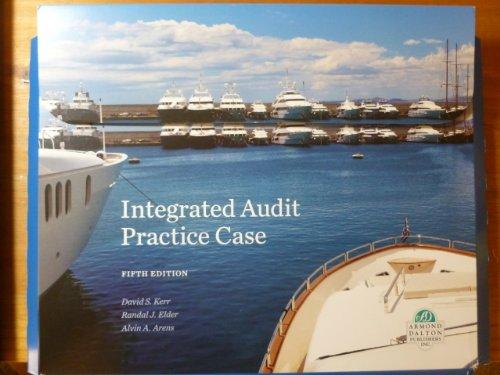Answered step by step
Verified Expert Solution
Question
1 Approved Answer
Determine cost of goods sold and ending inventory using FIFO, LIFO, and average-cost with analysis Glee Distribution markets CDs of the performing artist Unique. At





Determine cost of goods sold and ending inventory using FIFO, LIFO, and average-cost with analysis Glee Distribution markets CDs of the performing artist Unique. At the beginning of October, Glee had in beginning inventory 2,000 of Unique's CDs with a unit cost of \$7. During October, Glee made the following purchases of Unique's CDs. During October, 10,900 units were sold. Glee uses a periodic inventory system in part (a) and (b). Glee uses perpetual inventor system in part (c). Instructions (a) Determine the cost of goods available for sale. Value 18 pts. (b) Determine (1) the ending inventory and (2) the cost of goods sold under each of the assumed cost flow methods (FIFO, LIFO and average cost). Prove the accuracy of the cost of goods sold under the FIFO and LIFO methods. Value 75 pts. (c) Determine (1) the ending inventory and (2) the cost of goods sold under each of the assumed cost flow methods (FIFO, LIFO and average cost). Use the information ! NOTE: Enter a number in cells requesting a value; enter either a number or a formula in cells with a "?" . (b) Determine (1) the ending inventory and (2) the cost of goods sold under each of the assumed cost flow methods (FIFO, LIFO and average cost). Prove the accuracy of the cost of goods sold under the FIFO and LIFO methods. (1) Ending Inventory - FIFO (2) Cost of Goods Sold - FIFO Cost of goods available for sale Less: Ending inventory Cost of goods sold \begin{tabular}{|c|} \hline Value \\ \hline Value \\ \hline? \\ \hline \hline \end{tabular} Proof of Cost of Goods Sold - FIFO \begin{tabular}{|l|} \hline Date \\ \hline Date \\ \hline Date \\ \hline Date \\ \hline Date \\ \hline \end{tabular} \begin{tabular}{|c|} \hline Units \\ \hline Value \\ \hline Value \\ \hline Value \\ \hline Value \\ \hline? \\ \hline \end{tabular} \begin{tabular}{|c|} \hline Unit Cost \\ \hline Value \\ \hline Value \\ \hline Value \\ \hline Value \\ \hline \end{tabular} Total Cost \begin{tabular}{|c|} \hline? \\ \hline? \\ \hline? \\ \hline? \\ \hline? \\ \hline \end{tabular} (1) Ending Inventory - LIFO \begin{tabular}{|l|} \hline Date \\ \hline Date \\ \hline Date \\ \hline \end{tabular} (2) - Cost of Goods Sold -LIFO \begin{tabular}{l|c|} \hline Cost of goods available for sale & Value \\ \cline { 2 - 2 } Less: Ending inventory & Value \\ \cline { 2 - 2 } Cost of goods sold & ? \\ \hline \end{tabular} Proof of Cost of Goods Sold - LIFO \begin{tabular}{|l|} \hline Date \\ \hline Date \\ \hline Date \\ \hline Date \\ \hline Date \\ \hline \end{tabular} \begin{tabular}{|c|} \hline Units \\ \hline Value \\ \hline Value \\ \hline Value \\ \hline Value \\ \hline? \\ \hline \hline \end{tabular} \begin{tabular}{|c|} \hline Unit Cost \\ \hline Value \\ \hline Value \\ \hline Value \\ \hline Value \\ \hline \end{tabular} Total Cost \begin{tabular}{|c|} \hline? \\ \hline? \\ \hline? \\ \hline? \\ \hline? \\ \hline \hline \end{tabular} AVERAGE COST Total goods available for sale Total units available Average cost* *Round to two decimal points \begin{tabular}{|c|} \hline Value \\ \hline Value \\ \hline? \\ \hline \hline \end{tabular} (2) Cost of Goods Sold - Average Cost Cost of goods available for sale Less: Ending inventory Cost of goods sold \begin{tabular}{|c|} \hline Value \\ \hline Value \\ \hline? \\ \hline \hline \end{tabular} r 1 I 1 a Perpetual Inventory System
Step by Step Solution
There are 3 Steps involved in it
Step: 1

Get Instant Access to Expert-Tailored Solutions
See step-by-step solutions with expert insights and AI powered tools for academic success
Step: 2

Step: 3

Ace Your Homework with AI
Get the answers you need in no time with our AI-driven, step-by-step assistance
Get Started


